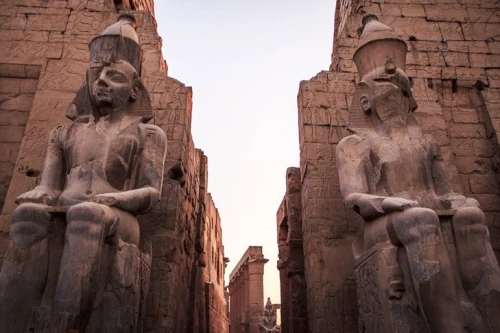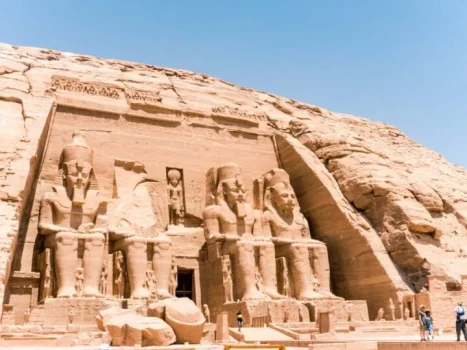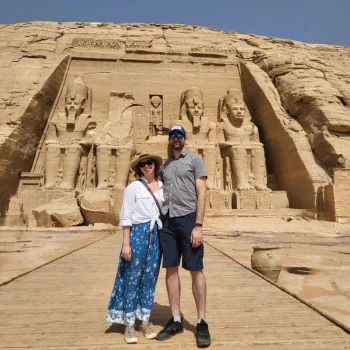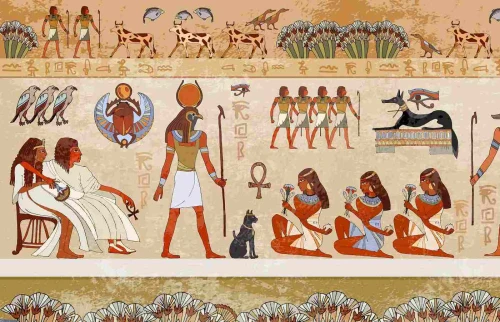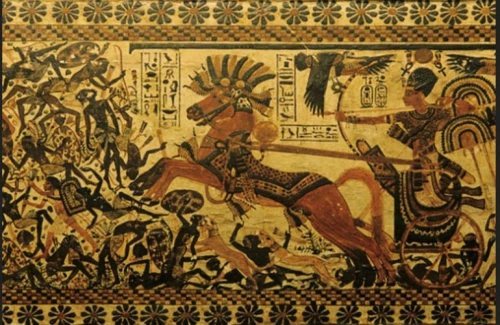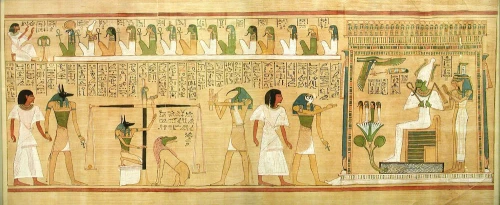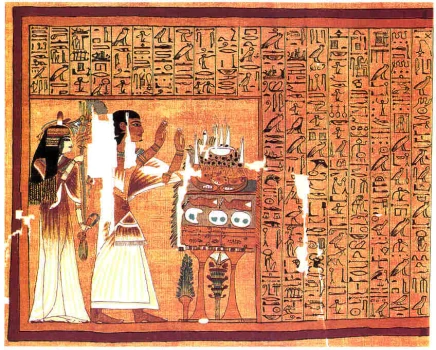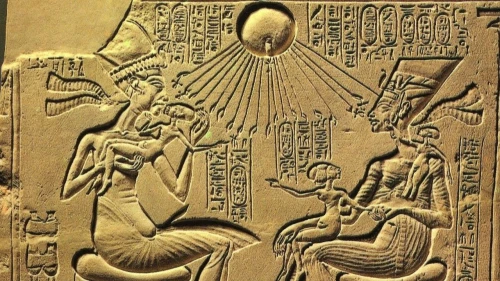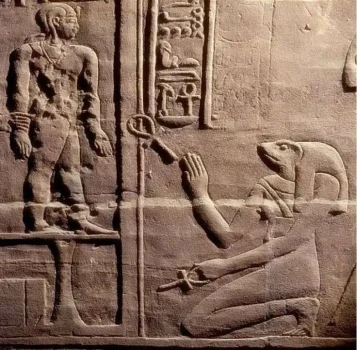
HEKET One of the original group of eight deities that form the Ogdoad, the basis of the Hermopolis creation myth. Heket was the female counterpart of Hek, a god of space. She later evolved into a frog goddess who assisted in childbirth. Heket is first mentioned in the Pyramid Texts (c. 2345 B.C), a group of magical inscriptions, in which she accompanies the spirit of the deceased king to his place in the sky. Her most important association was with childbirth, a distinction she shared with Bes and Tauren, who also protected mothers and children. Heket was specially called upon during the last stages of labor.
A Middle Kingdom papyrus (2055 - 1650 B.C) tells how Heket assisted the wife of the high priest of Re when she was about to give birth to the future king. Amulets and scarabs in the shape of a frog were often worn by pregnant women in the hope that Heket would assist them during labor. Magical inscriptions on ivory wands, popular in the Middle Kingdom, refer to Heket as the defender of the home.
A temple dedicated to Heket was found at Qus in Upper Egypt, and there is a reference to her cult in the tomb of Petosiris (fourth-century B.C) at Tuna el Gabel in Middle Egypt. Petosiris was a high priest of the god Thoth, and he recorded on his tomb that Heket led him to a shrine flooded by the yearly inundation of the Nile and asked him to repair her temple. Petosiris says that he summoned his scribe and gave him orders to build a new temple with a wall around it to keep it safe from future floods.
During the Eighteenth Dynasty, representations of Heket, with the body of a woman, are shown in the divine birth scenes of the king in Queen Hatshepsut temple at Deir el Bahari. In the Netherworld, Heket was present when the deceased was reborn. The frog sign in hieroglyphs was a cryptogram for the phrase when ankh (repeating life), a phrase that originated in the Middle Kingdom used to describe the deceased.
 English
English
 Spain
Spain

